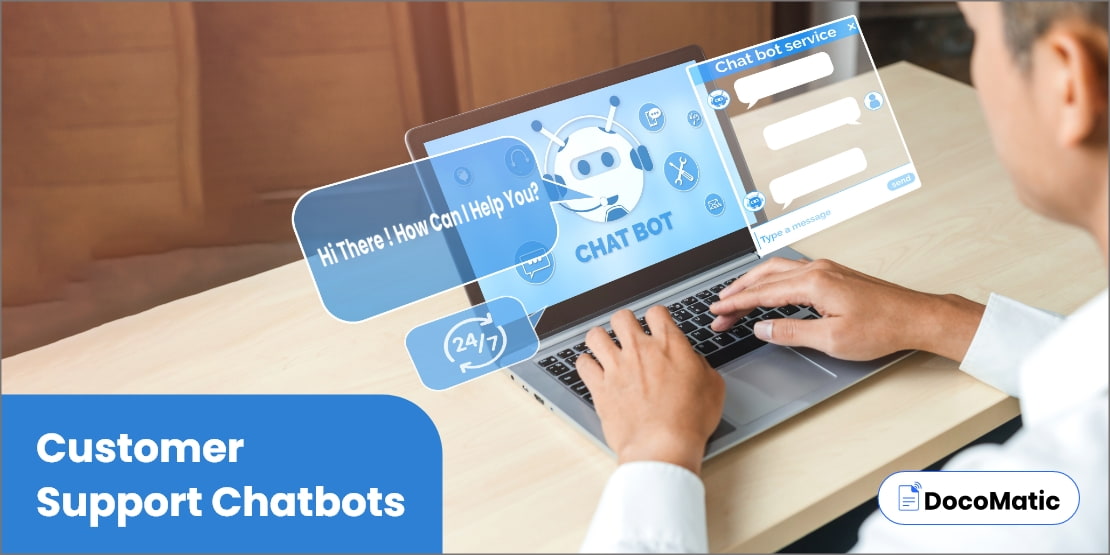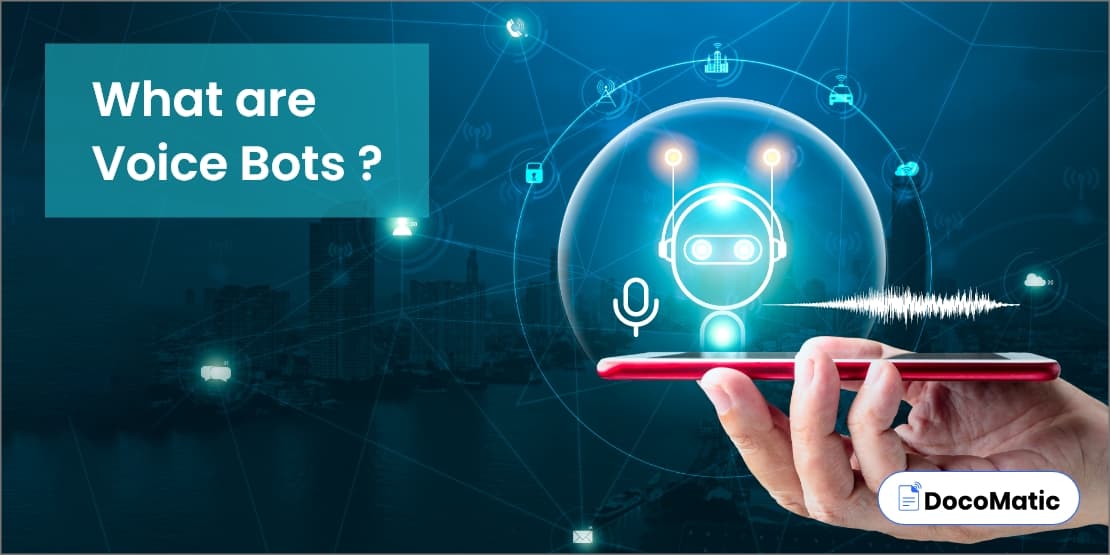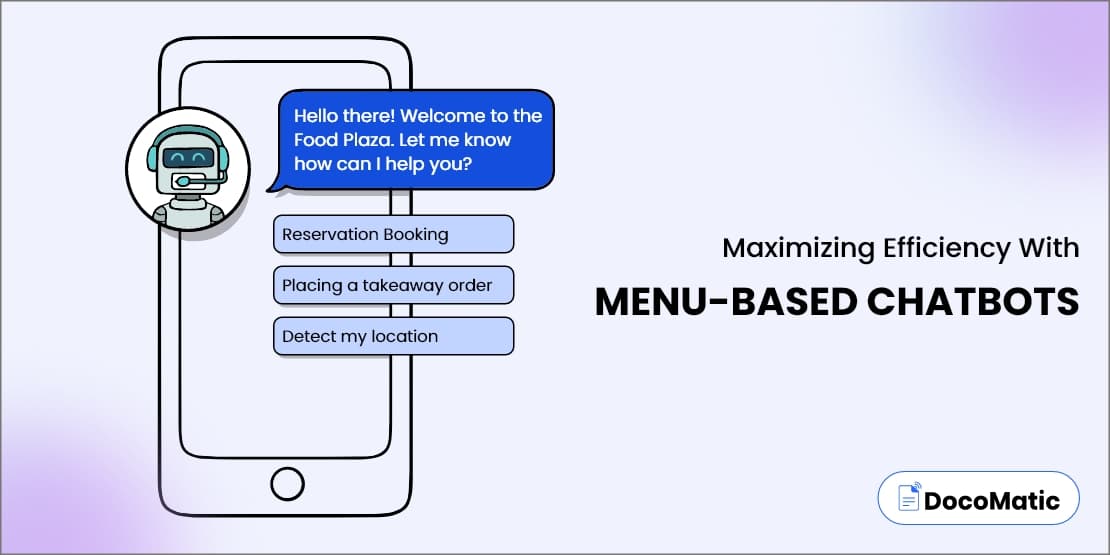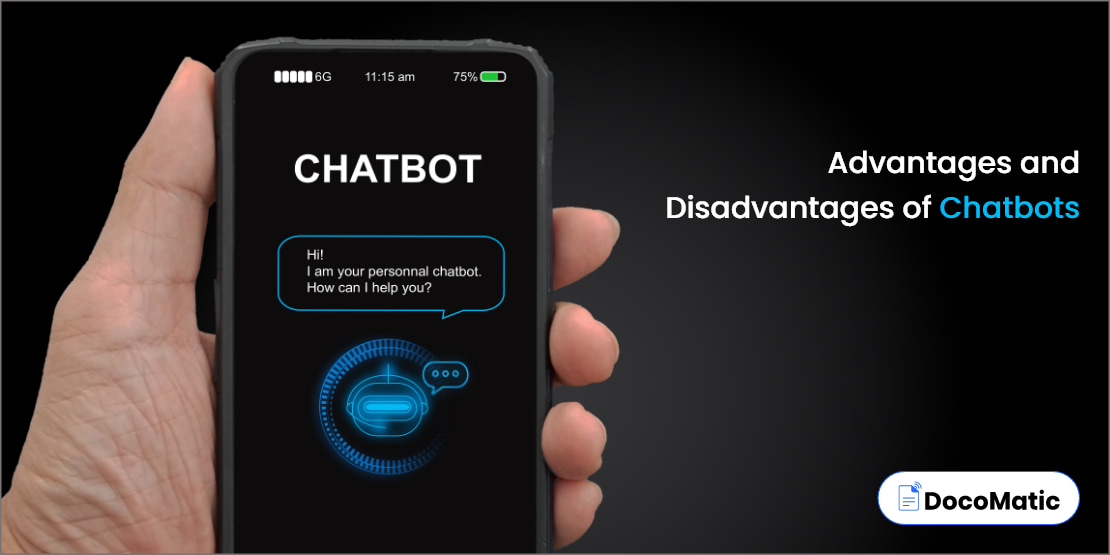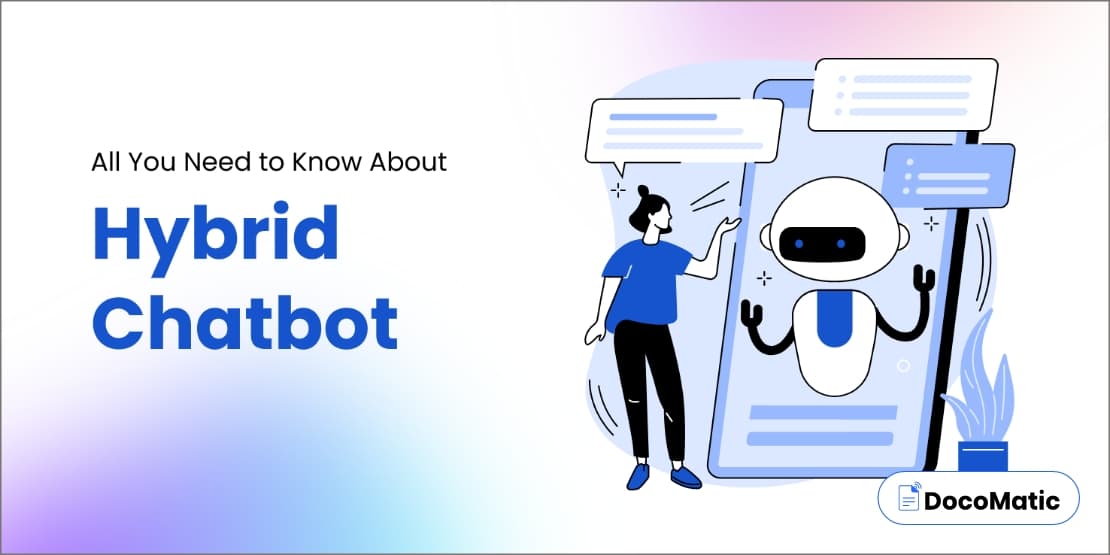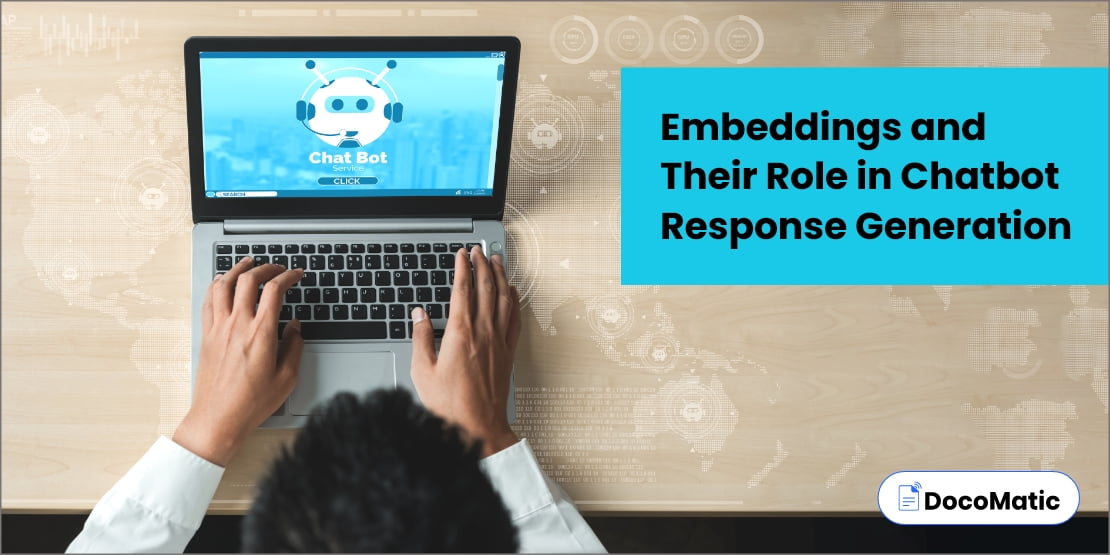A crucial component of every organization is customer service, and businesses are constantly seeking ways to enhance their customer service operations. Using customer support chatbots is one-way organizations are doing this.
AI-powered chatbots are virtual assistants that can answer questions of customers and offer help. They are utilized by businesses of all kinds and have grown in popularity in recent years.
Artificial intelligence (AI) and natural language processing (NLP)-based chatbots are becoming popular as a result of rising customer demand for quicker and more effective customer service.
Hence, in this blog post, we will examine the most effective customer support chatbots and provide tips on how to choose and implement the right chatbot for your business.
Table of Content
What is a Customer Service Chatbot?
A customer service chatbot uses artificial intelligence (AI), machine learning models, natural language processing (NLP), and natural language understanding (NLU)to comprehend and respond to client inquiries. It can answer customer questions about product information, shipment tracking, and other business-related inquiries.
The AI-powered chatbot can offer clients service around the clock, eliminating the need for a human agent to deal with regular inquiries.
List of 10 Best Customer Service Chatbots
Here is the list of the top 10 AI powered chatbots for streamlined and better customer service performance:
1. Hubspot
Artificial intelligence and natural language processing-based customer service chatbot are available from HubSpot.
Customers receive individualized assistance from such a customer support chatbot, which can also deal with a range of questions on products, services, and support. It can be customized to match the identity and tone of the business and works with HubSpot CRM.
Features
- Issues support tickets: The capacity of HubSpot’s customer service chatbot to gather data from customers and produce support tickets that can be allocated to the appropriate customer service team members is one of its key features.
- Provides knowledge base: Based on customers’ inquiries, the customer support chatbot can also give them appropriate knowledge base articles or documents.
- Collects customer feedback: Businesses can enhance their customer support operations by using HubSpot’s customer service chatbot to gather customer feedback and ratings.
- Provides engaging experience: HubSpot’s chatbot is intended to provide customers with a conversational & engaging experience while providing them with pertinent assistance and information.
- Access across multiple channels: It is usable on several platforms, such as websites, social media, and messaging services.
- Real-time analytics are available: Customer support chatbots can also give businesses real-time analytics and insights, enabling them to monitor and assess the efficiency of their customer support operations.
2. Salesforce
Salesforce is a well-known customer relationship management (CRM) platform that provides a chatbot for customer support operations.
The chatbot can be linked with the Salesforce CRM and is fueled by Salesforce Einstein AI, giving users a seamless experience. The chatbot has the capability of answering customer questions on sales, service, and support while also giving clients personalized help.
Features
- NLP capabilities: The capacity of Salesforce’s chatbot to comprehend natural language is one of its primary characteristics, making it simpler for users to communicate with the bot.
- Provides support: Based on clients’ prior interactions with the business, the chatbot can offer them appropriate information and support.
- Generates support tickets: By generating support tickets and assigning them to the proper customer service reps, Salesforce’s chatbot can ensure that client concerns are promptly resolved.
- Multi-platform usage: Salesforce’s chatbot can be utilized on a variety of platforms, such as websites, messaging apps, and social media platforms.
- Offer insights: The chatbot gives businesses real-time statistics and insights, enabling them to assess how well their customer support operations are working.
3. IBM Watson Assistant
A variety of capabilities for customer support operations are offered by the IBM Watson Assistant chatbot platform, which is powered by AI.
The chatbot can answer a variety of questions on sales, support, and service while also giving clients personalized assistance. Customers can communicate more easily with the IBM Watson Assistant chatbot since it can comprehend natural language.
Features
- Options for business system integration: The capability of the IBM Watson Assistant chatbot to integrate with numerous business systems and customer service tools, such as CRM, help desk software, and payment gateways, is one of its primary characteristics. Businesses can offer customers a seamless experience across many channels thanks to this integration.
- Better response: The chatbot on IBM Watson Assistant can gain knowledge from past communication with clients and give better and more accurate responses over time.
- Customization options and insights: The IBM Watson Assistant can be customized to match the branding and voice of the business. Moreover, it can offer organizations real-time information and insights, enabling them to evaluate and track the efficiency of their customer support efforts.
4. LivePerson
LivePerson’s chatbot offers conversational AI technology for customer service operations. Its assistance with lead generation, customer support, and customer engagement can be useful to businesses.
The chatbot offers integration options with a number of business systems and technologies, including CRM and analytics applications. Businesses can leverage the LivePerson chatbot’s real-time customer interaction metrics to drive their decisions.
Features
- Conversational AI technology: The LivePerson chatbot enables customer service automation for businesses and offers customized customer service by utilizing advanced conversational AI technology.
- Lead generation: Businesses can use LivePerson’s chatbot to generate leads by communicating with website visitors and helping them with the purchase process.
- Customer support: The chatbot platform can answer inquiries from clients and provide assistance in real-time, resulting in a seamless and effective experience.
- Integration with other business systems: LivePerson’s chatbot platform can be integrated with a wide range of business systems and tools, including CRM and analytics platforms, to provide organizations with a comprehensive perspective on customer interactions and insights.
- Real-time insights: By providing organizations with real-time information on client interactions, they can evaluate how effectively they are providing customer assistance and make informed decisions.
5. TARS
To provide clients with real-time and consistent customer service, TARS’ chatbot uses a conversational design and a personalized experience. To provide a smooth client experience, it provides integration options with third-party platforms like Salesforce, Zapier, and Mailchimp. Businesses have the option to design their own unique chatbot processes and keep track of client interactions thanks to TARS’ chatbot.
Features
- Design: TARS’s chatbot features a conversational design that gives users a customized experience. NLP is the foundation of this type of chatbot design, which enables users to interact with the bot in a conversational way.
- Integration with third-party systems: The TARS chatbot allows integration with platforms like Salesforce, Zapier, and Mailchimp. Through this integration, organizations can automate processes for generating leads, customer service, and customer engagement while offering clients a smooth experience across all channels.
- Custom workflow creation: The TARS chatbot gives businesses the option to design unique chatbot workflows. Businesses can employ this functionality to customize their chatbot to meet their unique needs and keep real-time tabs on consumer interactions.
6. Ada
Ada’s chatbot offers businesses a conversational interface driven by AI. To comprehend client inquiries and offer tailored replies, it combines machine learning and natural language processing.
Ada’s chatbot delivers real-time statistics, which enables businesses to analyze clients’ previous communication and make wise decisions. Also, it can be linked with a variety of corporate systems and customer service tools, including CRM.
Features
- AI-powered conversational user interface: Ada’s chatbot is driven by AI and makes use of machine learning and NLP to comprehend consumer inquiries and deliver customized replies.
- Integration with business systems: Ada’s chatbot may be linked with a variety of company tools and systems, including CRM, to offer a seamless client experience.
- Real-time analytics: Ada’s chatbot offers businesses real-time analytics, which aids in tracking consumer interactions and assisting in strategic decision-making.
- Personalized answers: Depending on the customer’s previous interactions with the business, Ada’s chatbot can offer personalized answers.
- Multilingual support: Ada’s chatbot has multilingual support, which makes it simple for businesses to offer customer service to customers in many locales.
- Customization: To provide a consistent customer experience, Ada’s chatbot can be customized to match the identity and tone of the business.
7. Bold360
Bold360 AI-powered chatbot improves the customer experience by enhancing customer interaction and assistance. The platform provides a number of functions, including social media interaction, email management, and real-time chat.
The Bold360 chatbots can respond to a variety of client inquiries and are built to comprehend natural language. The platform provides tools for managing and analyzing client interactions, giving organizations information about the preferences and behavior of their customers.
Features
- Chat widget: The Bold360 live web chat widget, and buttons can have their look changed by adjusting the color and transparency settings. Also, you can greet the website visitors with a welcome message and a few FAQs that include articles or questions with answers.
- Knowledge base: On the system’s back end, live web chat agents could get advice from Bold360 chatbots. In order to address the customer’s questions, Bold360 will make an effort to understand their objectives and pull information from its knowledge base.
- Live chat: Collect visitors’ contact information before a conversation starts, notify them of the anticipated response times as they wait in line, or gauge their experience after completing the live web chat session.
- Tools for administration: Bold360 includes tools for the administration that grant admin-authorized access to security systems, reporting, scheduling, and testing.
Other features include channel management, which enables users to manage chats, emails, Twitter, text messages, and other channels from a single place. Using AI’s Voices Dashboard, Bold360 collects consumer interaction data, emphasizing customer needs, creating customer profiles, and segmenting customers.
8. Drift
For sales, marketing, and customer service teams, Drift is a cloud-based live chat, in-app messaging, and email management solution. Drift provides a chatbot driven by artificial intelligence (AI), conversation records, email campaign automation, configurable live chat support widgets, email follow-ups for abandoned chats, and histories of customer conversations.
Features
- Conversational AI: Conversational AI enables Drift’s chatbot to comprehend natural language and provide personalized replies to customer service inquiries.
- Customized chatbots: Businesses can use Drift’s drag-and-drop chatbot building platform to design personalized chatbots. These chatbots can be modified to reflect the brand’s voice and provide customers with a customized experience.
- Automatic routing: Drift’s chatbot can direct customer inquiries to the appropriate customer service reps for assistance. This guarantees that clients get timely and instant responses to their queries.
- Integration with CRMs: Popular CRMs and other business systems like Salesforce, Marketo, and Hubspot can be linked with the Drift chatbot. This enables organizations to immediately gather leads and customer information in their existing systems.
- Real-time analytics: This feature can be used by organizations to monitor client interactions and assess the effectiveness of their chatbots. Making informed decisions and enhancing the general customer experience are both possible with this data.
- Support for multiple languages: Drift’s chatbot makes it simple for businesses to offer customer support in their preferred language.
9. Intercom
You can build stronger customer interactions with Intercom, which describes itself as a conversational relationship platform.
The three features they primarily offer are live chat, chatbots, and a help desk.
You have three different types of chatbots with Intercom:
- Task Bot: This chatbot won’t engage unless a teammate closes the discussion or if no teammates are assigned to the customer conversations. For instance, the Task Bot automatically answers, “Chatimize typically replies in a few minutes” when you ask a question.
- Custom Bot — This chatbot is entirely customizable, with predetermined processes and components.
- Resolution Bot – This chatbot responds to inquiries from your customers automatically (based on keywords).
Features
- Start guide: Intercom gives you a “quick-start guide” when you sign up to assist you to get started with their platform, which is quite helpful.
- Immediate solutions: The chatbots from Intercom automatically respond to client inquiries by examining your FAQs and knowledge base articles. The Resolution Bot on Intercom goes a step further by providing pertinent responses depending on what users are typing, even before they press the enter key.
- Constant learning: Intercom’s chatbots for customer service do more than merely provide AI-based instant answers to queries. They also employ it to learn from past experiences and instantly improve the quality of future assistance provided.
- Customized responses: With Intercom’s Resolution Bot, you have the option to select the audience the bot addresses and the sort of questions it responds to depending on factors such as customer spending, business type, location, and more. With solutions that are specifically tailored to their requirements, you can address your clients’ problems.
- Consistent user experience: Intercom chatbots assist you in giving your consumers a consistent, on-brand experience. There won’t be any “we don’t say that” scenarios since you have complete control over the voice, tone, and language used in your bot’s answers.
10. Landbot
Landbot is a no-code chatbot platform that enables businesses to easily and quickly develop conversational interfaces. Users can build customized chatbots and surveys using its drag-and-drop interface without any programming experience.
Moreover, Landbot provides a variety of pre-made chatbot workflows and templates to assist businesses in getting up and running quickly.
The chatbots on the platform are designed to be interactive and interesting, giving users a personalized experience. Landbot offers real-time data on customer interactions and communicates with a variety of different business systems and tools.
Features
- Visual drag-and-drop builder: You can create complex flows with conditional logic, formulae, and rich media using an engaging and user-friendly drag-and-drop user interface.
- Bricks and templates: Reusable bricks and templates make it simple to build several chatbots for customer service and intricate flows. Start with the library of templates and learn how to use the builder to make your own.
- Reporting and analytics: With the help of chatbot analytics, you can set objectives, check data, and examine conversation drop-offs.
- Dynamic data: Your chatbot can be integrated into any data source to provide a fully unique interaction with options that are generated dynamically.
- Conditional logic: It’s easy and enjoyable to generate several paths based on user input. Just point and click to create a unique user experience.
Benefits of Customer Support Chatbots
Businesses can gain a multitude of benefits by implementing these chatbots, including
1. 24/7 availability
The ability to work around the clock and offer assistance to customers by dedicated customer service teams is one of the main benefits of such chatbots. Customers will enjoy being able to obtain the assistance they require whenever they need it, which can enhance customer experience, satisfaction, and loyalty.
2. Cost savings
They can lessen the pressure on human agents, freeing them up to concentrate on more complicated customer issues. Businesses could be able to save money as a result of having fewer support staff on board. According to IBM, deploying chatbots can lower customer service costs for businesses by up to 30%.
3. Improved efficiency
It can manage many customer inquiries at once, cutting down on long waits and enhancing response times. How? By simply assisting you to automate the feedback collection process. It can automatically help you collect customer feedback directly or analyze customer sentiment during interactions. it can also manage a larger volume of customer inquiries with less personnel, this can enhance efficiency and productivity for businesses.
4. Personalized customer service
Advanced customer service chatbots can utilize machine learning algorithms to personalize their replies to each individual customer. This could result in a more personalized and interesting customer experience, boosting customer satisfaction and loyalty.
Choosing the Right Chatbot for Your Business
Given the wide range of alternatives on the market, choosing the ideal chatbot for your business might be difficult. Making an informed decision, however, can be facilitated by taking a few aspects into account.
Complexity of customer queries
The intricacy of consumer queries that the chatbot will handle should be taken into account as the first factor. A simple chatbot that can respond to frequently asked questions (FAQs) may be adequate if your clients’ inquiries are straightforward and simple.
But if your clients have more complicated questions, you might require a chatbot with sophisticated natural language processing (NLP) abilities that can comprehend and address them.
Budget
Your budget is a crucial factor to take into account. Chatbots for customer service can be basic and inexpensive or sophisticated and pricey. You should evaluate your budget and determine how much money you are willing to spend on a chatbot solution.
Integration capabilities
The chatbot’s integration capabilities should also be taken into account. A chatbot that can integrate with your current help desk, CRM, and other business systems can offer clients a seamless experience and enhance your customer support operations.
Customization options
You can alter the branding, tone, and answers of certain chatbots through customization options. This can assist you in developing chatbots for customer support teams that suit the particular requirements and voice of your business.
Analytics and reporting
You can use chatbots that offer real-time analytics and reporting to evaluate the efficacy of your customer service operations and pinpoint areas that need to be improved.
Tips for Evaluating and Comparing Different Chatbots
The following are a few tips to keep in mind when assessing and comparing various chatbots:
- Read case studies and reviews: To learn about the pros and cons of various chatbots, read reviews and case studies.
- Request trials and demos: To acquire a feel for the chatbots and decide which one is ideal for your business, ask for demos and trials of various chatbots.
- Evaluate scalability: Think about how the chatbot will scale with your organization as it expands and how it will respond to a growing amount of consumer inquiries.
- Assess the support and maintenance: Take into account the chatbot provider’s quality of support and maintenance as well as the cost of continuous upgrades and maintenance.
Best Practices for Implementing Customer Support Chatbots
Businesses should adhere to a number of best practices when implementing a customer service chatbot in order to make sure that their chatbot strategy succeeds.
Training chatbots
A customer service chatbot must first be trained in order to increase its accuracy and efficiency. Businesses should invest time and money in training their chatbots to comprehend natural language, respond to a range of client inquiries, and offer personalized support to customers.
Monitoring chatbot performance
In order to guarantee high-quality customer support, monitoring chatbot performance is crucial. Businesses should regularly check chatbot metrics and transcripts to find areas for development and make sure the chatbot is giving customers the correct information.
Balancing chatbots with human support
In order to provide personalized customer support, chatbots should be utilized in combination with human customer service agents, even if they are capable of handling many consumer inquiries.
Chatbots can answer simple, regular questions, but human customer support agents excel at handling sensitive, complicated questions that call for empathy and a personal touch.
Integrating chatbots with business systems
To deliver a consistent customer experience across channels, chatbots should be integrated with business systems and tools. Moreover, integration enables chatbots to gather and save user data, facilitating more individualized support.
Providing clear communication channels
Businesses should provide customers with access to clear communication channels for chatbot assistance. For example, a specific chatbot tab on their website or social network messaging tools.
It is simpler for businesses to manage customer requests when there are clear channels of communication to let customers know where to turn for assistance.
Continuous Improvement
Businesses should monitor chatbot performance, collect customer feedback, and make adjustments depending on customer demands and trends to continuously improve the chatbot.
To guarantee that they are giving customers accurate and useful support, chatbots should be continuously updated with fresh data and responses.
FAQs
Chatbots for customer service can manage certain complex customer support inquiries, depending on their level of customization and complexity. For more complex problems, it could be essential to sometimes employ a human agent for customer support.
In order to provide personalized customer support, using a chatbot for customer service presents a range of challenges, including
- Initial training to increase accuracy
- Performance monitoring to maintain quality service
- Balancing chatbots with human agents’ support
Businesses can assess and compare various chatbots by taking into account aspects like budget, functionality, customization, integration with existing systems, and vendor support services. They can also read reviews and get advice from professionals in the field.
Conclusion
Customer service chatbot has revolutionized the way businesses interact with their customers. It offers personalized assistance, streamlines workflows, and provides a seamless experience to customers across different channels.
Chatbots have advanced to the point where they can now respond to a variety of customer support inquiries, thanks to developments in artificial intelligence and natural language processing.
Businesses can boost customer experience, satisfaction, and loyalty by integrating chatbots into their customer service processes, which will eventually result in more revenue and growth.
